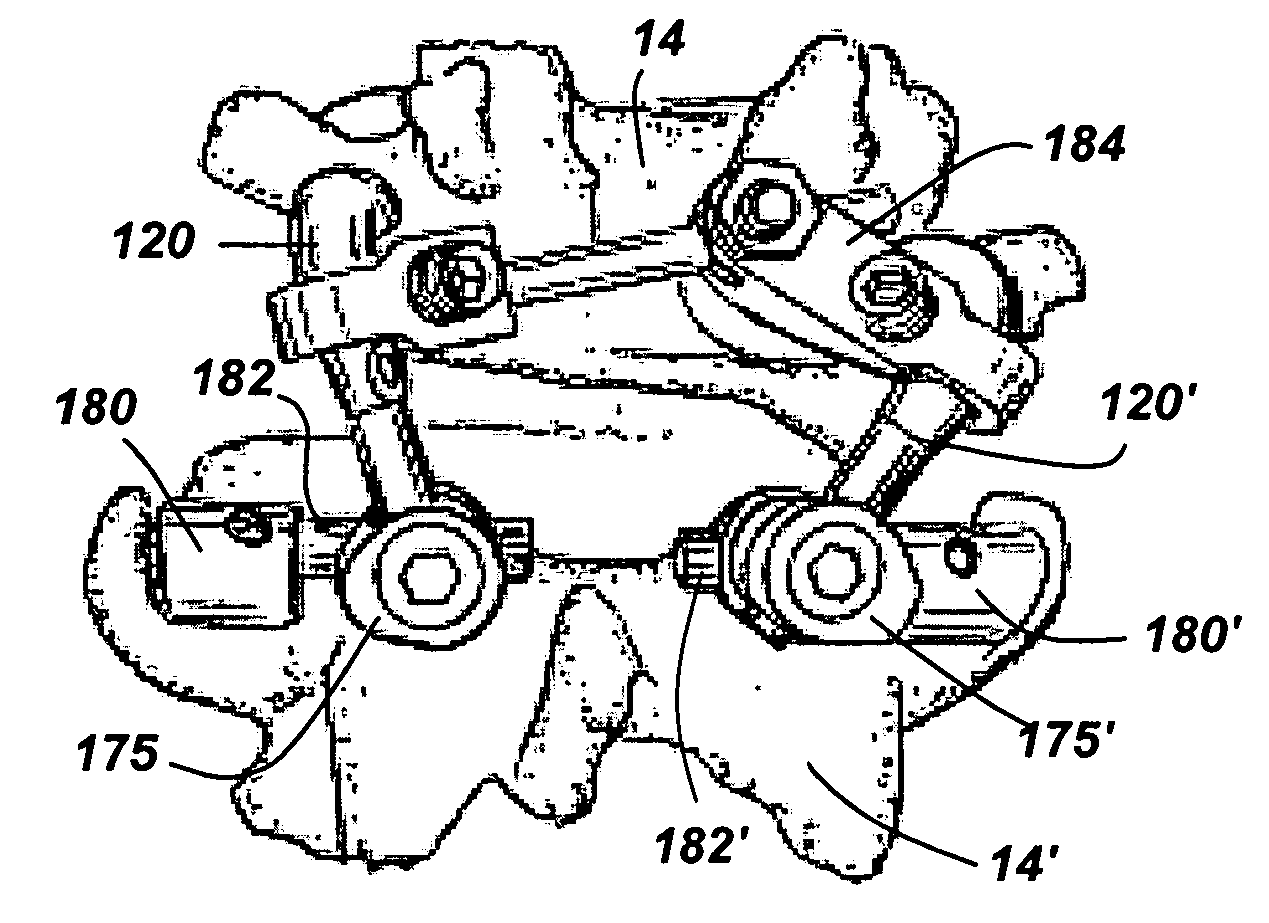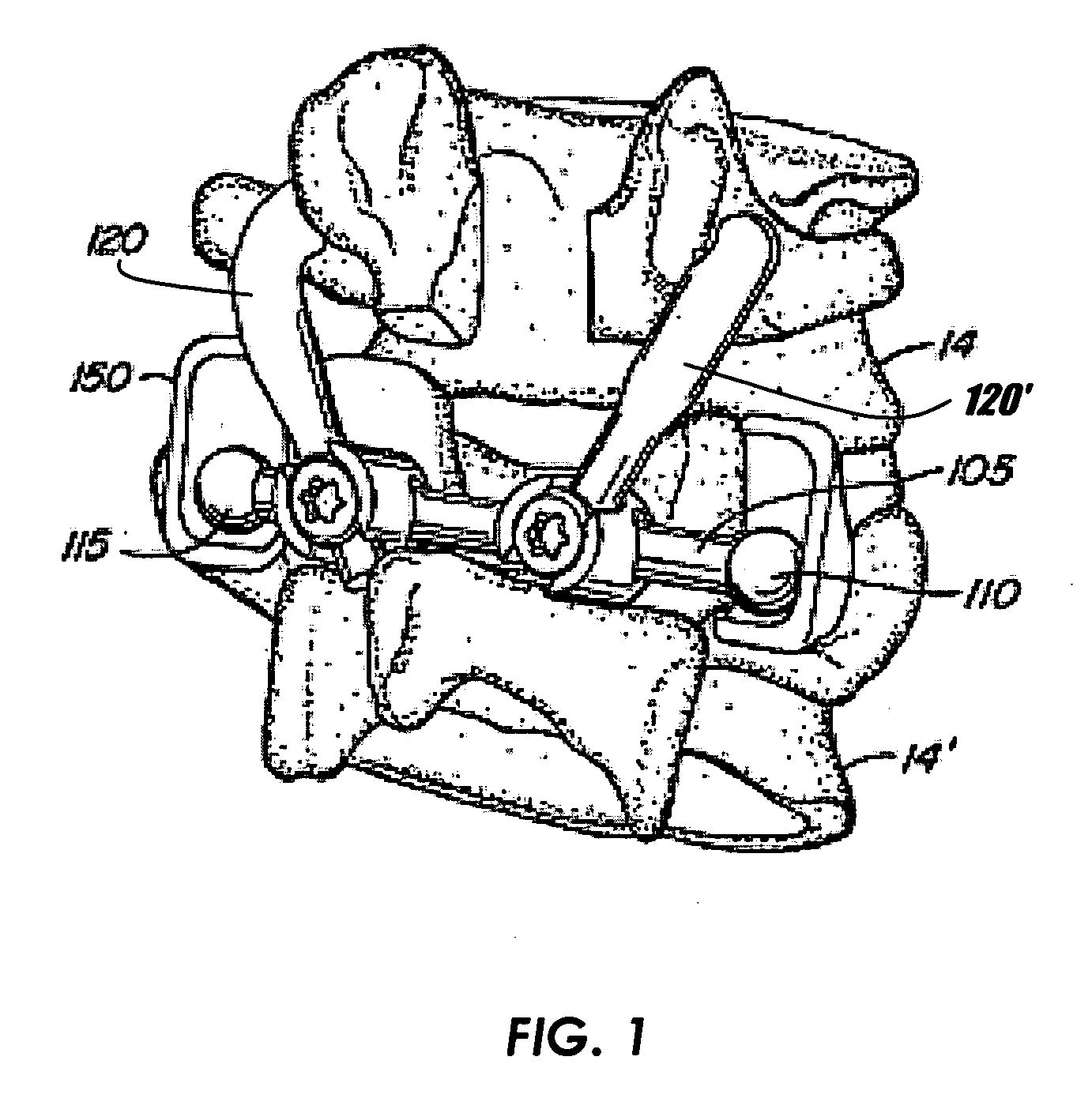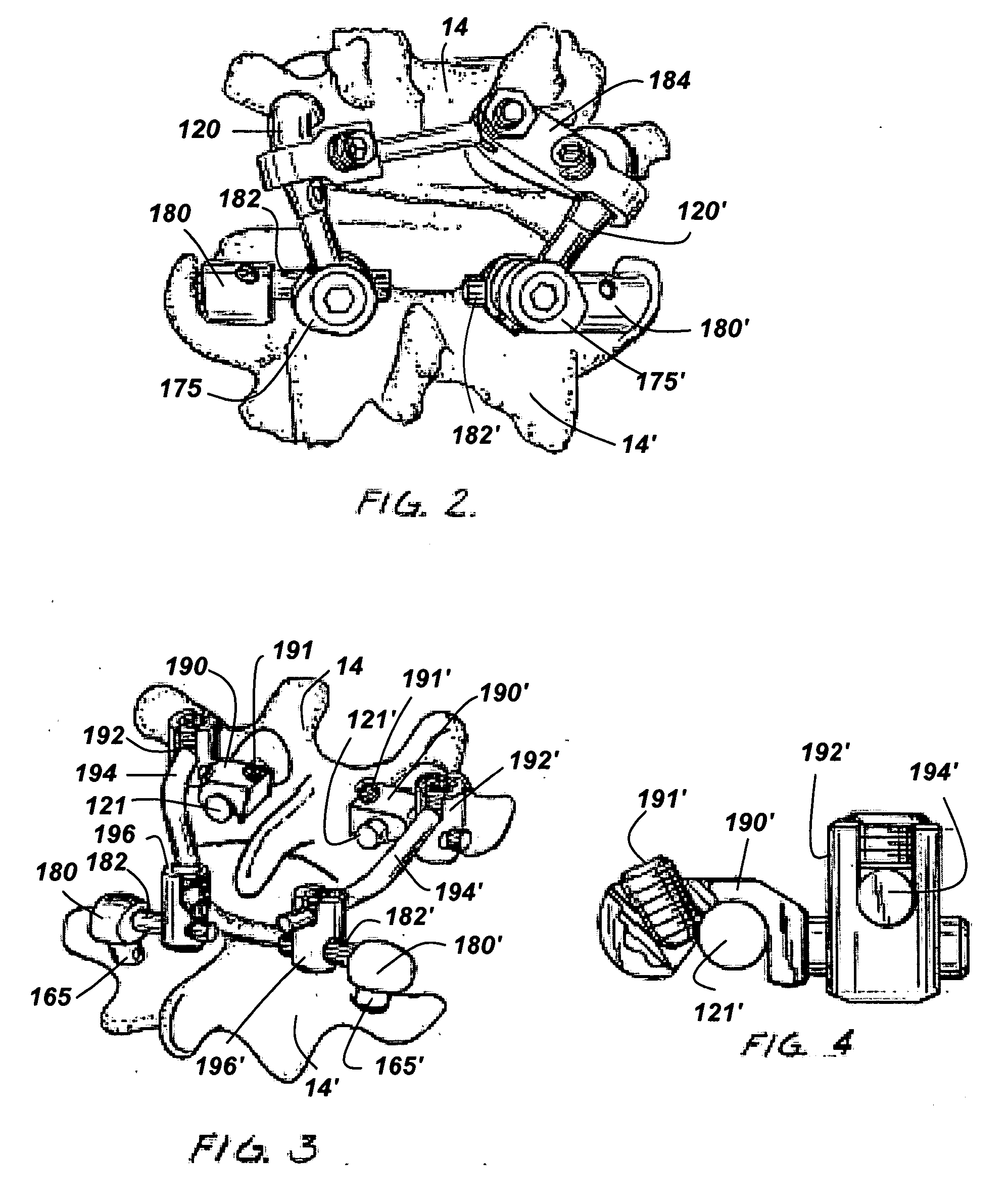Arthroplasty revision system and method
a technology of arthroplasty and revision system, applied in the field of arthroplasty revision system and method, can solve the problems of severe limitations on the functional ability and quality of life of people, loss of proper alignment or loss of proper articulation of the vertebrae, and interference with work, routine daily activities, and recreation
- Summary
- Abstract
- Description
- Claims
- Application Information
AI Technical Summary
Benefits of technology
Problems solved by technology
Method used
Image
Examples
Embodiment Construction
[0051] The revision devices and methods of this invention may be used with a variety of spinal implants, such as arthroplasty implants. FIG. 1 shows an exemplary spinal arthroplasty device attached to adjacent vertebrae 14 and 14′. The spinal arthroplasty device includes a crossbar 105, a pair of cephalad arms 120, 120′ and a pair of caudal cups 150, 150′. Heads 110 and 115 at opposing ends of crossbar 105 interact with bearing surfaces inside caudal cups 150 and 150′ to replace the articulating action of the patient's natural facet joints, which have been removed, when the patient flexes and extends his or her back. In this example, each cephalad arm 120, 120′ attaches to the pedicle of the superior vertebra 14 as shown, via, e.g., a stem (not shown) inserted into the pedicle. The other ends of the cephalad arms attach to crossbar 105 via crossbar mounts 175 and 175′. The caudal cups 150 and 150′ attach to the inferior vertebra 14′ via, e.g., stems (not shown) inserted into the ped...
PUM
 Login to View More
Login to View More Abstract
Description
Claims
Application Information
 Login to View More
Login to View More - R&D
- Intellectual Property
- Life Sciences
- Materials
- Tech Scout
- Unparalleled Data Quality
- Higher Quality Content
- 60% Fewer Hallucinations
Browse by: Latest US Patents, China's latest patents, Technical Efficacy Thesaurus, Application Domain, Technology Topic, Popular Technical Reports.
© 2025 PatSnap. All rights reserved.Legal|Privacy policy|Modern Slavery Act Transparency Statement|Sitemap|About US| Contact US: help@patsnap.com



